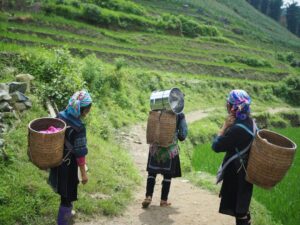
People sometimes don’t get plants, and I’m still learning too. But I know plants are our friends, and they want to help us. Imagine a world with even more trees and forests than we have now – that would be awesome!

But why don’t we have that?
It could be because we need to eat more different kinds of plants. When you walk in the woods, the plants look at you; each is special.

Now vs Before:
In the Standard American Diet, people eat about 30 different kinds of plants annually. We can think of a hamburger, for example. We have the bun, lettuce, tomato, onion, and mustard inside that burger. That’s a total of 5 species. But long ago, people living in the wild ate between 60 and 200 plants yearly (this doesn’t account for species eaten for medicinal purposes).
I am currently in the research phase of documenting exactly how many species I have consumed. Here are ten species to show my point: wild carrot, burdock, evening-primrose, wild sunflower, garlic-mustard, dandelion, thistle, chicory, balsam-fir, and black birch. What has been lost in the process of depending on modern grocery stores?Rewild Yourself: Learn How

“New” Trend
There has been a resurgence of indigenous peoples returning to their ancient ways of eating and harvesting food, which is an inspiring trend. Why does this matter? Plants have unique stuff called phytochemicals that are good for us, and wild plants have different ones than the ones we usually eat.

Plant & Food Safety
Please be careful and study the plants before picking them. Take care of nature because it’s all we have. If you are interested in learning more about plant identification, harvesting, and care, join our online LMSR Plant Foraging Course at thelionmanschoolofrewilding.com to help people learn more about plants and not fear them when they enter the forest. Knowing about plants is powerful!

